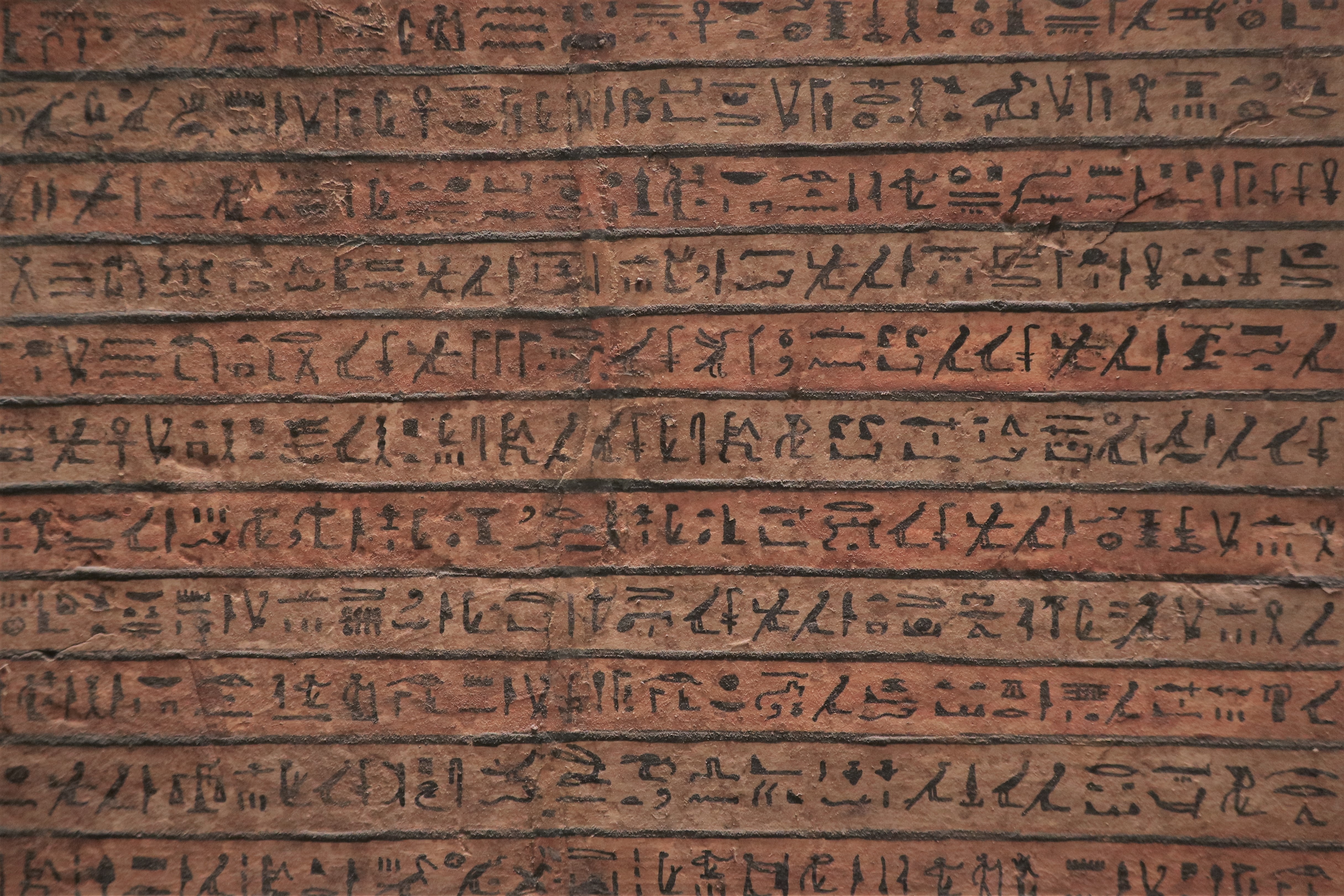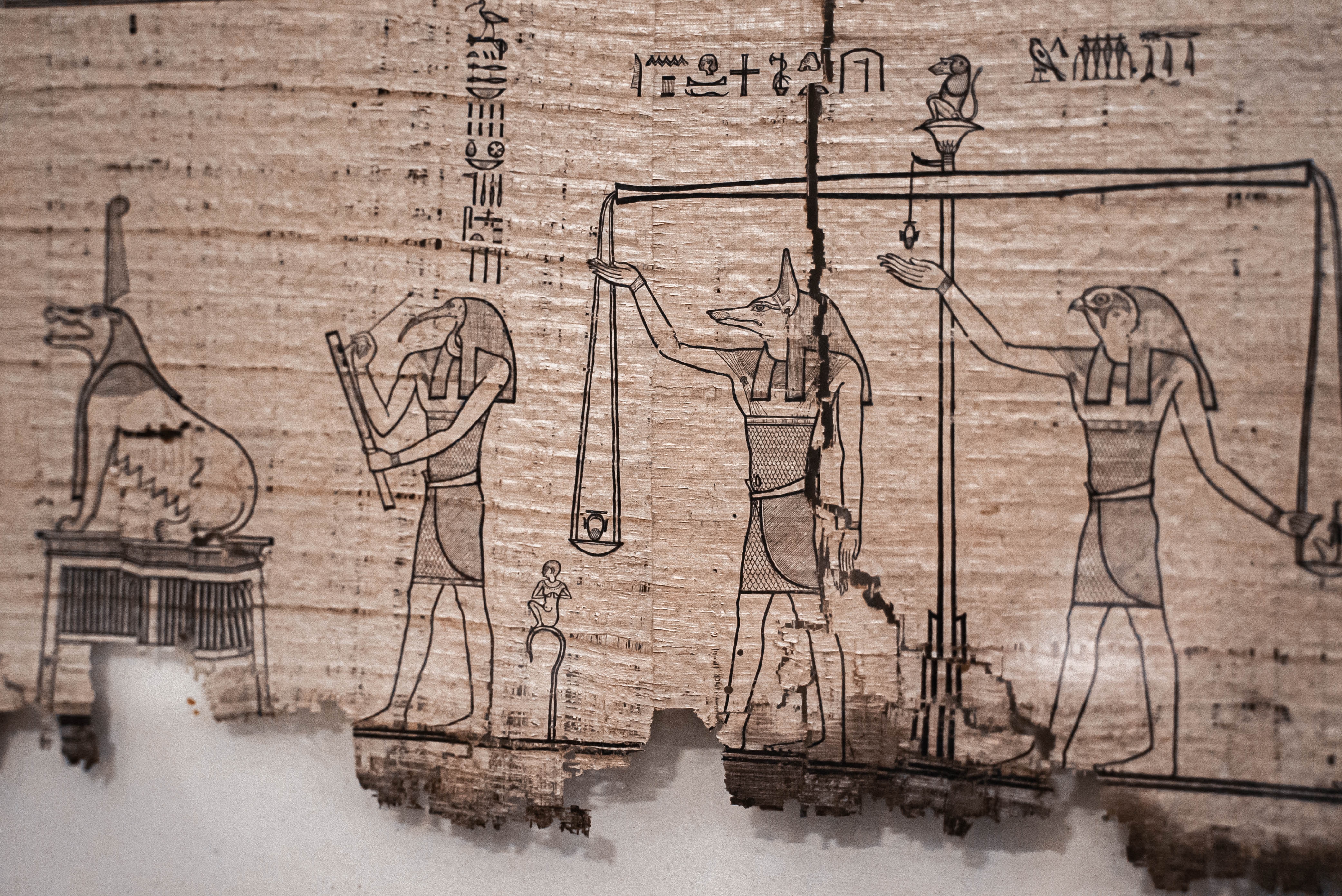Few inventions have had as profound an impact on the development of civilization as papyrus in Egypt. The original ‘paper,’ this humble plant-based writing material forever changed the way information was recorded, disseminated and preserved.
Papyrus was not only instrumental in shaping the course of Egyptian society but also in facilitating the spread of knowledge and culture far beyond the banks of the Nile.
For travel inspiration: Egypt destination guide
The Origins of Papyrus

Papyrus, derived from the Greek word ‘papuros,’ refers to a type of ‘paper’ made from the pith of the papyrus plant. Scientifically known as Cyperus papyrus, this aquatic plant is native to the Egypt’s Nile Delta. Although not paper in the true sense, papyrus was the first writing material to assume many of those properties and played a pivotal role in the development of writing and communication in the ancient world.
The process of crafting papyrus was labor-intensive but highly effective. The outer green rind of the papyrus plant was removed, leaving behind the inner white pith. The pith was then sliced into thin strips, laid out in a crisscross pattern, and pressed together.
The natural sap within the plant acted as a binding agent, fusing the strips into a single sheet. After drying in the sun, the resulting material was smooth, durable, and ready to ink.
We think you’ll also like: Secrets in the sand: the thrill of uncovering Egyptian artifacts
Papyrus and Ancient Egyptian Civilization

Closely intertwined with the rise of ancient Egyptian civilization, Papyrus in Egypt is believed to have been developed as early as 2900 BCE. Although its use became more widespread during the New Kingdom period (circa 1550-1070 BCE). The earliest archaeological evidence of papyrus dates back to 2560-2550 BCE, with documents excavated from an ancient Egyptian harbor on the Red Sea Coast.
Egyptian papyrus paper offered several advantages over earlier writing materials like clay tablets and animal skins. It was lightweight, flexible, and easy to store, making it an ideal medium for recording and preserving knowledge.
It was used for religious texts, government records, legal documents, literature, and even personal correspondence. The ability to record and disseminate knowledge played a vital role in the development of Egypt’s administrative and intellectual prowess.
Papyrus in Egypt was not only used for writing but also for creating everyday items such as baskets and mats.
You may also enjoy reading: 100 years on: The fascinating story behind the discovery of King Tut’s Tomb
The impact of papyrus beyond Egypt

Once the technology of papyrus making was developed, its method of production was a closely guarded secret. This allowed the Egyptians to retain a monopoly and it became the lifeblood for ancient Egypt. Papyrus was however exported to many locations in the ancient world, through trade and cultural exchange.
This material was adopted by the Greeks and was used extensively in the Roman Empire. These scrolls served as a bridge between civilizations, enabling the dissemination of ideas, literature and knowledge.
Papyrus was also the medium of the New Testament in the early centuries after the death of Jesus. These Christian texts were often in the form of a codex, rather than a roll, containing several leaves bound together much like a modern book.
Shortly after the Arabs introduced the pulped paper process into Egypt in the 10th century (which they had learned from their Chinese prisoners), the papyrus plant disappeared from the area of the Nile as the Egyptians gradually abandoned the production and neglected the cultivation of plantations.
For fans of ancient history: These history experiences will expand your knowledge of the ancient world
Why historical texts survived
Fortunately, the arid climate in Egypt has allowed papyrus to endure for millennia. This low humidity also serves as a shield against the harmful impact of microorganisms, such as mold, that could otherwise deteriorate and damage the papyrus. In ancient Egypt, the inks utilized for writing demonstrated remarkable stability: both the carbon black and red hematite (red ochre) inks are insoluble in water and impervious to the effects of light, ensuring that the writing remains legible even today.
The manner in which papyri were initially employed has a significant impact on their state of preservation. Take, for instance, books of the dead, which were prestigious and finely crafted items intended for a single use—accompanying the mummy during burial. As a result, these papyri can occasionally endure in remarkably intact condition.
Capital gains: Cairo: the trans continental capital of culture
What they tell us
The recovery of intact papyrus scrolls has offered tantalizing glimpses into the past, revealing the wisdom, beliefs and customs of ancient societies.
Some of the earliest medical texts ever discovered are written on papyrus. The Edwin Smith Surgical Papyrus, dating back to around 1600 BCE, provides detailed insights into surgical procedures and medical knowledge of the time. This unique treatise contains the oldest known descriptions of signs and symptoms of injuries of the spinal column and spinal cord. Similarly, the Ebers Papyrus contains prescriptions and remedies for various ailments, reflecting the medical practices of ancient Egypt.
Papyrus has also preserved literary works from antiquity, including epic poems, plays, and philosophical treatises. For example, the works of the ancient Greek poet Sappho were preserved on papyrus, enabling us to step back in time to classical Greek poetry.
Save for later: Egypt’s most fascinating archaeological discoveries you’ve never heard of
Where can you see papyrus in Egypt?

Visit the Papyrus Institute near Giza to discover the ancient art of making papyrus prints. One of the most interesting ways to see papyrus in Egypt, you’ll learn about the manufacturing process from ancient times to the present day. Visitors can also watch a demonstration to see papyrus in production today.
Selkhet Papyrus in Hurghada is the biggest gallery of papyrus in Egypt. Here visitors can watch papyrus being made and see how the ancient Egyptians used hieroglyphs to communicate.
Other notable papyrus discoveries
Oxyrhynchus Papyri – Discovered in the late 19th and early 20th centuries in the Egyptian city of Oxyrhynchus, this collection comprises thousands of papyrus fragments containing a wide range of texts, including literary works, letters, legal documents and more. These fragments have greatly expanded our understanding of daily life, literature, and administrative practices in ancient Egypt. These can be seen at the Sackler Library, Oxford, in the UK.
The Herculaneum Papyri – In the 18th century, a remarkable discovery was made in the Roman town of Herculaneum, buried by the eruption of Mount Vesuvius in 79 CE. Among the excavated artifacts were papyrus scrolls that had been carbonized by the volcanic eruption. These scrolls, known as the Herculaneum Papyri, contain works of Greek philosophy, epic poetry, and more and ate on display at the National Library of Naples. Advanced imaging techniques are being used to carefully unroll and decipher these fragile scrolls, offering the potential for new insights into ancient Greek thought.
If you’re inspired to immerse yourself in Egypt’s history, monuments and culture, along with stylish hotels and delicious cusine, take a look at our collection of premium guided tours.



